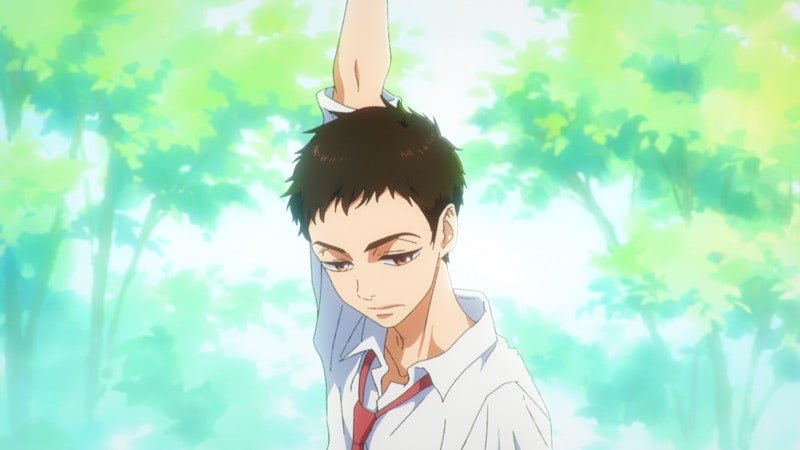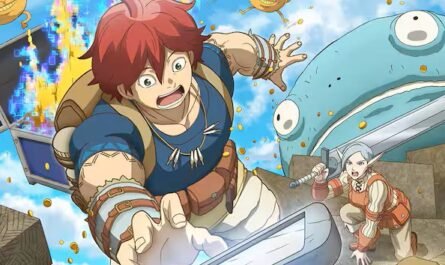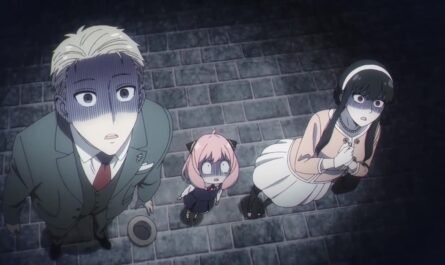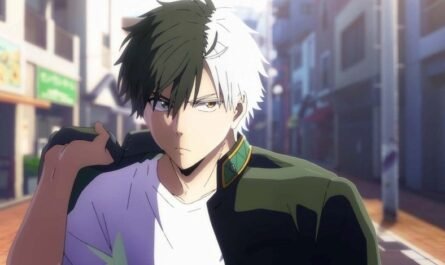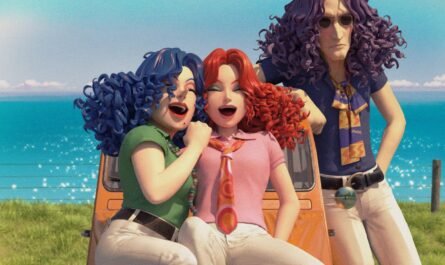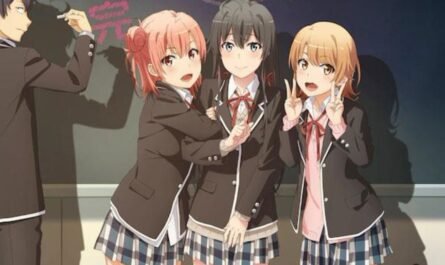The manga “Dance Dance Danseur”, centred on men’s ballet, will be made into a TV animation on April 8. The author is George Asakura, who is also known for “Drowning Knife,” “Piece of Cake,” and “Koibun Hiyori.” This will be the first animation of George’s work.
The protagonist of the story is a “boy” in the second year of junior high school, who deviates from the path of ballet when he was young, but is re-engaged in the world. In work, a boy who is fascinated by ballet opens the way to becoming a professional himself, and the quiet explosive power created by the art of ballet is depicted in detail, including the dynamics of the body, the fluctuation of the air, the light and the sound, and the heart—appeal to.
Isn’t there an image of ballet as “girls”? There is an estimate that the male-female ratio of ballet classes in Japan is “1:30”. Although there are works on ballet girls, manga with ballet boys as the main characters is extremely rare.
What is the reason for drawing the story centred on boys in ballet, the charm of ballet that I experienced when drawing the work, and the Message that is the basis of the work? We asked Mr George Asakura from three perspectives before the animation.
The world depicted in “Dance Dance Danseur.”
The main character, Junpei Murao, is a boy in the second year of junior high school (at the beginning of the series). When he was young, he learned the explosive power of a male ballet dancer, Nicholas Blanco, as if the stars were exploding, and began attending ballet classes. However, after the sudden death of his father, who was his action director, he decided that he had to be a man and gave up his ballet career.
At 13, Junpei inherits his father’s thoughts and goes to the “masculine” martial arts Jeet Kune Do dojo. On the other hand, he couldn’t stop thinking about ballet in his heart and spent his days with a sense of lack. In front of Junpei, a transfer student ballet girl, Godaito, appears, and the story begins to move again. It is a story that aims to become a leading dancer, “Danseur noble,” who has both character and qualities with an extraordinary sensibility that reflects the expression of sound as it is and the physical ability and physical strength that he was born with.
When the serialization began in “Weekly Big Comic Spirits” (Shogakukan) in 2015, the dramatic development attracted by Junpei and the worldview created by energetic and detailed brushstrokes became a hot topic. There are 23 books so far, and the latest issue released on March 30 depicts Junpei studying under the swing and studying in New York.
In his daughter’s ballet classroom, his idea was to ask a boy, “How do you get over adolescence?”
Classical ballet is a world in which women have a strong image of being the “leading role.”
“Sleeping Beauty,” “Giselle,” “Cinderella,” “Coppelia,” … Most of the ballet performances bear the names of female protagonists. According to a survey of ballet classrooms nationwide released in March, the population difference is enormous, with only 3.1% of male students and a male-female ratio of about 1:30.
Most of the ballet performances are classic love stories. A romantic world is born for the first time when a male dancer and a female dancer meet on the stage. Even watching the scene, there is no sense of discomfort in having a male dancer. However, to classmates’ surprise, “Ballet !? Why !? Even though he is a man !?” is drawn even in work, it may be a higher hurdle for sensitive adolescent boys to continue ballet than girls. Unknown.
I have been learning ballet for almost ten years, but there was only one boy my age. I remember feeling uncomfortable in the classroom corner as the ballet girls made a lively circle. That is why the work that puts the ballet boy on the “edge” at the “centre” of the story was very fresh.
It is said that the seed of the creation was a little boy who was in the ballet classroom where George Asakura’s daughter attended.
“At first, I wondered if my parents liked ballet, but he said he wanted to try it. Other boys were coming in. However, when it comes to the puberty of the third and fourth grades, it seems that there will be a wave of quitting ballet. The active male ballet dancers now ask, “How did you overcome that puberty? I started thinking about it in my head.
I wanted to draw ballet, so it wasn’t the order for boys, but there was boys’ ballet from the beginning. I tried to draw a boy who could overcome puberty and choose ballet. The part that Junpei wanted to draw when he decided ballet had already been removed. But I’ve come up with many things I wish to draw on Junpei’s path, so I’m still drawing. “
Junpei, who was encouraged by the capital of the transfer student and started ballet again, was trapped in a specific curse called “masculinity”, but he witnessed the actual performance of the genius ballet boy Mori Ryu and said that he would stick to himself. Get “true coolness”. As he reads on, his consciousness that “ballet is feminine” disappears somewhere.
“I got a disease that only interests me in ballet.”
The world view of ballet, which combines choreography, costumes, stage sets, and music, approaches as if it were coloured on a monochrome page. In “Dance Dance Danseur”, the dancer’s emotions, heartbeats, air sway, light and sound are drawn with a tremendous amount of heat, and the ballet stage emerges. I also fall into the feeling of coming.
Some people may think that ballet, also called “formal beauty,” seems complex and incomprehensible. George was once one of them.
“The plot of classical ballet isn’t very intriguing when you look at it, and I don’t have an aesthetic eye in the first place, so it was an image of a culture that high-skilled people enjoy. I understood the meaning of “Shisada”. When I saw the dance that was addicted to the fixed pattern, I felt that the drug in the brain came out, and above all, when I received the feeling that the dancer was burning his life, I felt happy. The deeper you dig into the ballet plot (scenario), the more interesting it becomes. The interpretation differs depending on the performer so that you can enjoy the different roles behind the role! “
Even during the work, teenage boys and girls, including Junpei, superimpose their circumstances inside “Princess Aurora” and “Prince Desire” and let the blood pass through. The character standing in the picture book takes on humanity through the body and emotions of the dancer. Even with the same technique and steps, you can get a completely different impression depending on the expression of the role you play. “Danseur” makes you realize the fun of ballet.
“Ballet isn’t just about stories, choreography, or music. I’m sure you can remember and move, but I think interpretation is essential to sublimate it into a dance. When I draw, I can’t draw unless I’m convinced. I couldn’t draw the choreographer unless I interpreted it myself, “What kind of thought did the choreographer make this movement?”
“I bought a ballet ticket for the royalties for two books published in analogue each year,” says George. The characters are also projected with the dances of various authentic dancers. “I’m only interested in ballet right now,” says George enthusiastically.
“In my case, when I saw” Petrushka “starring Vladimir Malakhov, I liked all the acting and the story, and that was the moment when I got into ballet. It would be great if the animation could be a catalyst for people interested in starting ballet, regardless of gender.”
“The belief that goes through you is a treasure” Message delivered by the work “Dance Dance Danseur” depicts teenage boys and girls choosing ballet on their initiative and aiming for heights. Even if you are about to get entangled in the pride and inferiority complex peculiar to adolescence, it is fresh and dazzling to grasp “the way your ballet should be” with your own will and talent.
Impressive is the scene of Shiranami Hibiki that will appear later. He has extraordinary artistry and has been selected as the leading audition for the stage “Sleeping Beauty”, but he has a potent complex with a sober appearance that her family and acquaintances have despised. She has given up living in a ballet world where beautiful looks are valued, but after meeting and auditioning with a partner who faces her without hating her appearance, she says, “I will live in a ballet world.” Get ready.
It is said that the origin of the message is the words of two ballet boys that I saw in a documentary.
“When I saw the Paris Opera Ballet School documentary, I was asking the boys,’ Why did you start ballet?’ One boy asked his classmates who made fun of him,’ I am. He said, “I’m going to be a ballet professional. That’s why I’m going to do ballet.”
The words of another boy are also the origin of the work. “Ballet is often thought of as feminine, but it’s explosive to me,” he said. Even though I’m still in the 5th or 6th grade of elementary school, I remember being surprised at the answer that I was aware of “what I want” by dancing ballet on the stage. “
Even during the work, questions from rivals and leaders refrain many times. Junpei has sometimes lived by being swept away by the surrounding air and expectations, but he finds the answer to that question by continuing to dance. Did he choose the crossroads of his life according to his pure will, like the characters he appears in? Did he give up somewhere and make safe choices? That question also pierces the reader himself.
“If you have the belief that goes through you, it’s a treasure, and if you believe in yourself and choose the path, you’ll have no regrets. I’m still drawing Junpei while thinking about that. Junpei aims to be a “professional” in making a living from ballet, but the final form is not yet known. I think he will continue to explore how Junpei wants to proceed. “

